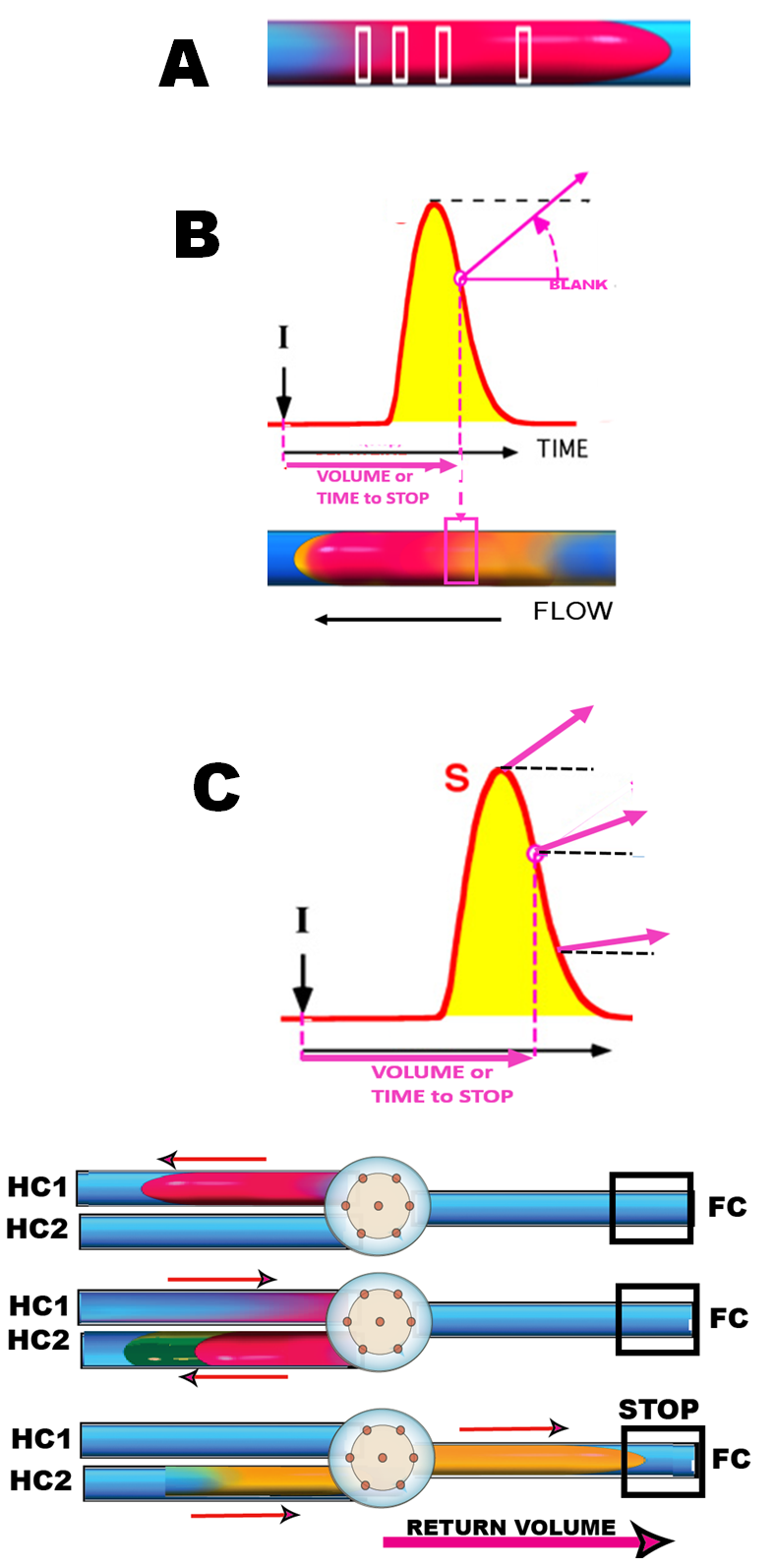The Concentration Gradient and SFC Method
In order to identify the variables that impact the reproducibility of SFC based assay, we need to review and evaluate the way in which sample zone undergoes a physical transformation on the way to the flow cell.
As the sample zone disperses while it travels downstream (A), a concentration gradient is formed. This gradient can be viewed as integral of numerous individual sections, each section comprising a different concentration of an analyte.
Stop flow reaction rate method, the SFC assay, depends on arresting a selected portion of the reacting sample zone within the flow cell (B). As the reaction proceeds during stop flow period, the absorbance increases in time, in proportion to on concentration of the analyte. The concentration of the analyte trapped in the flow cell depends on two variables:
- Concentration of the analyte in the injected sample
- Position of the sample zone in the flow cell
If the section of the dispersed sample zone trapped within the flow cell comprises peak maximum (C, top), the concentration of the analyte will be highest and the reaction rate curve will be steepest. The more dispersed sections of sample zone, trapped in the flow cell, will yield responses with lower slopes. Therefore sensitivity an assay can be adjusted by selecting position of the sample zone within the flow cell; for high sensitivity at a peak maximum, for lower sensitivity towards tail of the peak.
The positioning of the zone within the flow cell is best adjusted by selecting the volume of solution that will transport the reacting mixture from the holding coil into the flow cell. It follows that precision of the assay critically depends on reproducibility of delivering this return volume (Rv), and this is why SFC technique has not gained acceptance in Flow Injection, although in Sequential Injection has been widely used (Chapter 2). The reason is, of course, not the methodology, but the instrument of propulsion: syringe pumps (used in SI) generate wide range of highly reproducible flowrates over long periods of time, while peristaltic pumps, the most popular choice in cFI, generate flowrates that decrease in time as the peristaltic tubing deteriorates.
1.2.29.










